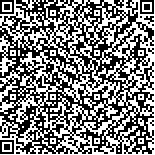李晓芳,李月美,赵生秀,等.青海省部分医院急性期脑卒中患者认知功能障碍的影响因素分析及预测模型构建[J].中华物理医学与康复杂志,2023,45(7):598-603
扫码阅读全文

|
| 青海省部分医院急性期脑卒中患者认知功能障碍的影响因素分析及预测模型构建 |
|
| |
| DOI:10.3760/cma.j.issn.0254-1424.2023.07.004 |
| 中文关键词: 脑卒中 认知障碍 危险因素 预测 高原 |
| 英文关键词: Stroke Cognitive impairment Risk factors Prediction High altitude |
| 基金项目:青海省科技厅(2019-ZJ-7090) |
|
| 摘要点击次数: 3901 |
| 全文下载次数: 4229 |
| 中文摘要: |
| 目的 调查青海省部分医院急性期脑卒中患者认知功能障碍的患病情况,分析其影响因素并构建危险因素模型。 方法 采用前瞻性、横断面调查方式,从青海省3家医院选取急性期脑卒中患者854例,收集患者的一般资料(人口统计学、临床资料、饮食和休闲活动)。在脑卒中发作后14 d内,采用简易精神状态量表(MMSE)评定患者的认知功能,将MMSE评分≤27分的患者纳入认知障碍组(569例),其余患者纳入认知正常组(285例)。采用单因素分析和多因素Logistic回归分析明确各因素与结局事件的关系,依据回归方程建立预测模型,通过受试者工作曲线(ROC)验证预测模型的效果。 结果 本研究中急性期脑卒中患者的认知障碍发病率为66.60%。单因素分析显示:①人口学资料方面,两组患者在年龄、性别、民族、教育程度、职业、居住海拔高度、社会支持、与配偶同住方面的差异有统计学意义(P<0.05);②临床资料方面,两组患者在卒中类型、偏瘫、高血压史、甘油三酯、D-二聚体方面的差异有统计学意义(P<0.05);③日常活动情况,两组患者在日常生活活动(ADL)评分、闲暇活动评分方面的差异有统计学意义(P<0.05);④一周饮食情况,两组患者在摄入食盐、坚果、水果方面的差异有统计学意义(P<0.01或P<0.05)。多因素Logistic回归分析显示,年龄[OR=1.032,95%CI(1.015,1.050),P=0.000]、女性[OR=1.743,95%CI(1.120,2.711),P=0.014]、出血性脑卒中[OR=2.420,95%CI(1.335,4.385),P=0.004]、高血压[OR=1.496,95%CI(1.006,2.226),P=0.047]、高度海拔[OR=3.003,95%CI(1.379,6.539),P=0.006]是急性期脑卒中患者的独立危险因素;教育程度、职业、闲暇活动得分、甘油三酯、食用坚果是急性期脑卒中患者的保护性因素。构建的影响因素模型显示,ROC曲线下面积(AUC)为0.832,灵敏度为0.698,特异度为0.814。 结论 所纳入的青海省急性期脑卒中患者的认知功能障碍发病率较高,年龄、女性、出血性脑卒中、高血压、高度海拔是急性期脑卒中患者的独立危险因素,教育程度、职业、闲暇活动得分、甘油三酯、食用坚果是急性期脑卒中患者的保护性因素。构建的危险因素模型有良好的预测能力,可针对上述危险因素制订相关干预措施,提高患者的生活质量。 |
| 英文摘要: |
| Objective To explore the local prevalence of early cognitive dysfunction after a stroke in some hospital of Qinghai province, analyze its risk factors and construct a risk factor model. Methods A prospective cross-sectional survey was conducted among 854 stroke patients at 3 hospitals in Qinghai Province. The survey solicited demographic data, clinical data, and information about the respondents′ diet and leisure activities. Within 14 days after stroke onset, all of the participants′ cognitive performance was quantified using the Mini-Mental State Examination (MMSE). Those with scores ≤27 formed the cognitive impairment group (n=569), while the rest were the normal cognition group (n=285). Through univariate analysis and multivariate logistic regression analysis, the relationship between each factor and the outcome was clarified, and a prediction model was established in the form of a regression equation. The model′s receiver operating characteristics (ROC) curve was computed. Results The incidence of acute cognitive impairment after stroke was 66.6%. Univariate analysis showed that there were significant differences between the two group in terms of age, sex, ethnicity, education, occupation, altitude, living with a spouse and social support. Stroke type, hemiplegia, a history of hypertension, and triglyceride and D-2 polymer levels were significant predictors, as were ADL score, leisure activity level, and weekly consumption of fruits, nuts and salt. The multivariate logistic regression analysis showed that age, being female, hemorrhagic stroke, hypertension, and living at high altitude were independent risk factors for cognitive impairment at the acute stage of stroke. However, education, occupation, leisure activity and consumption of triglycerides and nuts were independent protective factors. The prediction model showed an area under the ROC curve of 0.832, with sensitivity of 0.698 and specificity of 0.814. Conclusions The prevalence of cognitive dysfunction in the acute stage of stroke is high in some hospital of Qinghai province. Age, being female, hemorrhagic stroke, hypertension and high altitude living are independent risk factors for stroke, while education, an occupation, leisure activity and triglyceride and nut consumption are protective factors. The risk factor model established in this study has good predictive ability with this population, with whom it can be used to formulate interventions to improve the life quality of stroke survivors. |
|
查看全文
查看/发表评论 下载PDF阅读器 |
| 关闭 |
|
|
|